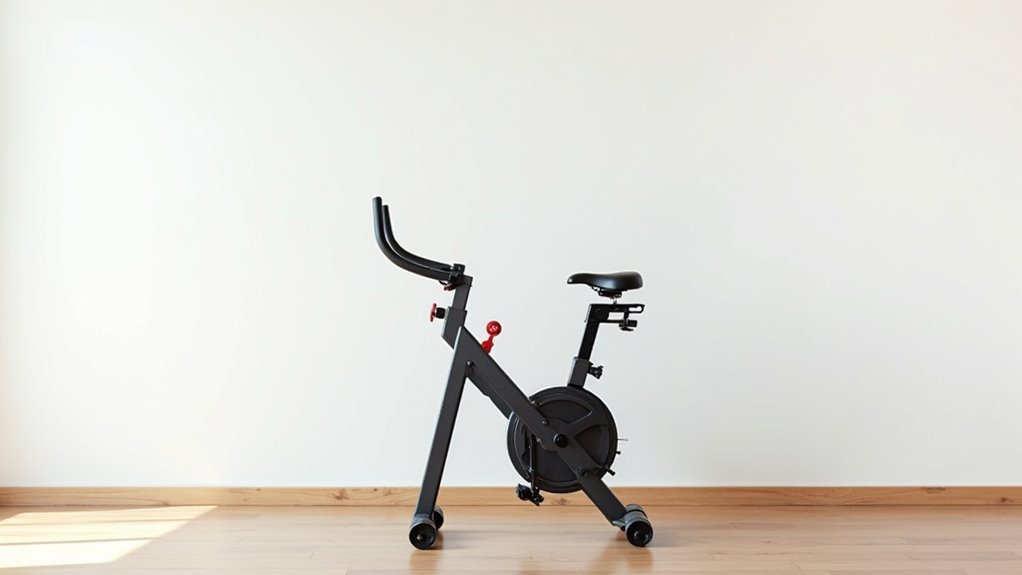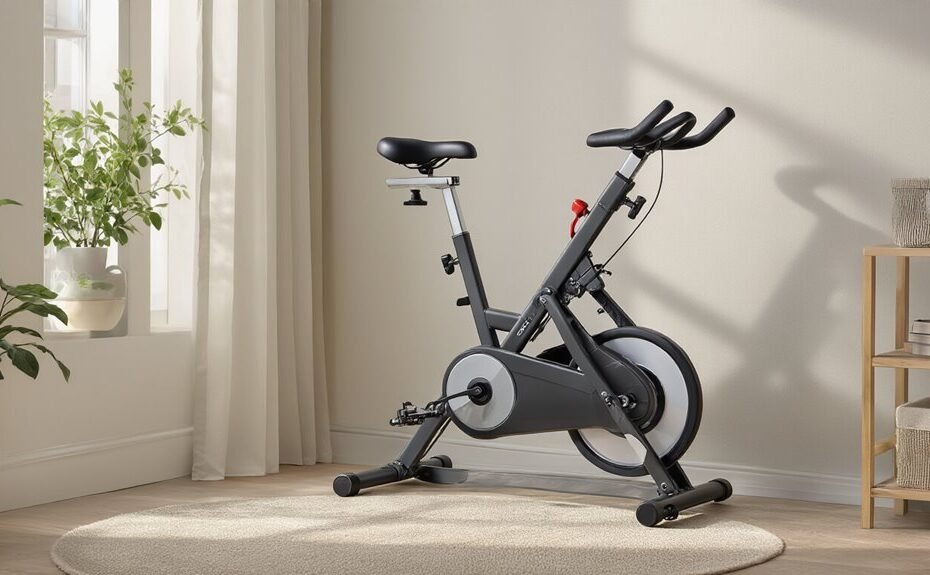Living in compact spaces doesn’t mean sacrificing fitness goals. Folding exercise bikes offer clever design solutions for apartment dwellers and those with limited room. These space-conscious machines combine functionality with practicality through thoughtful features that minimize their footprint when not in use. The best models disappear almost entirely between workout sessions, yet deploy quickly when needed. What exactly makes these fitness tools so apartment-friendly? Their standout space-saving characteristics offer surprising versatility for modern living.
Some of the links in this article may be affiliate links. If you make a purchase through these links, we may earn a small commission at no extra cost to you. Thank you.
Compact Foldable Frame Designs for Small Apartments
When space comes at a premium in small apartments, finding exercise equipment that doesn’t monopolize valuable floor area becomes crucial. Folding exercise bikes offer the perfect solution with their compact foldable frame designs.
The innovative X-frame design provides stability while minimizing footprint, allowing users to enjoy workouts without sacrificing living space. Models like the Marcy can fold to just 18.5″ × 18.5″ × 51.5″, enabling discreet storage in closets or corners.
With lightweight construction—typically 30-45 pounds—and transport wheels, these portable folding bikes are perfect for easy relocation between rooms. Additionally, they cater to an increasing demand for home fitness gear in the evolving exercise market.
They’re fundamentally the chameleons of fitness equipment, adapting to your space-saving needs whenever required.
Convenient Transport Wheels for Easy Movement
Mobility serves as the unsung hero in any portable fitness equipment, and folding exercise bikes excel in this department with their convenient transport wheels.
These lightweight machines, typically under 50 pounds, can be effortlessly moved around by a single person without heavy lifting. The wheels enhance user experience by facilitating quick setup and storage, making spontaneous workouts more likely.
Whether you’re relocating from your living room to home office or just rearranging your space, these portable exercise bikes roll smoothly across different floor types without causing damage.
This convenient feature promotes frequent use—because let’s face it, equipment that’s easy to access actually gets used!
Vertical Storage Capabilities for Minimal Footprint

Three standout features of folding exercise bikes are their exceptional vertical storage capabilities, which truly set them apart in the home fitness market.
When not in use, these innovative fitness tools transform to occupy minimal footprint in tight living spaces.
- Folding vertically to dimensions as small as 18.5″ L x 18.5″ W x 51.5″ H
- Easily tucked into closets or under beds when space is at a premium
- Integrated transportation wheels for effortless maneuvering without heavy lifting
- Creates a more organized environment by eliminating permanent clutter
- Enables an active lifestyle even with significant space constraints
This compact size design is particularly appealing for apartment dwellers who want fitness equipment without sacrificing precious living space.
Frequently Asked Questions
What Are the Cons of a Foldable Exercise Bike?
Folding design drawbacks include stability issues during intense workouts, limited resistance levels, less comfortable seating, potential durability concerns, and possible assembly difficulties compared to standard bikes despite compact storage benefits.
Is a Magnetic or Flywheel Better?
Magnetic resistance systems offer quieter operation and lower maintenance requirements, while flywheels provide smoother operation with greater workout intensity. Choice depends on priorities: noise levels, portability options, durability factors, and price comparison considerations.
Can I Lose Belly Fat by Riding a Stationary Bike?
Stationary bike workouts effectively reduce belly fat by burning calories, especially at higher cycling intensity. Combined with proper nutrition, this exercise routine supports weight loss and improved body composition to achieve fitness goals.
How Long Should a 70 Year Old Ride a Stationary Bike?
Like a gentle sunrise, a 70-year-old should ride a stationary bike for 20-30 minutes most days, focusing on cardiovascular health benefits while gradually building endurance through age-specific workouts that support joint safety and mental wellbeing.
